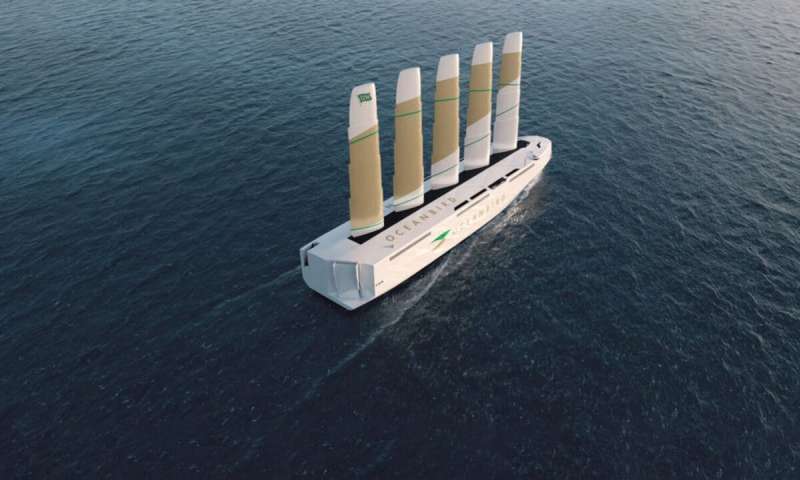Shipping is our most used means to transport our merchandise. Even though it is more eco- friendly than freight, according to certain measures, these cargo ships are still powered by fossil fuels and we truly need an improvement from that.
We need innovative ways to live more sustainable in how we ship items too.
The cause for around 2% of energy-related carbon emissions is these fossil fuels used in the ships and it’s going to rise in the future. To avoid this issue, John Westell of Wallenius Marine came up with a new design named ‘Ocean Bird’.
Ocean Bird is the largest ocean-going wind-powered cargo vessels, reducing emissions by 90 percent. This vessel is designed by John Westell and produced by Honnor Marine Ltd.
It can carry 7000 cars and can cross the Atlantic Ocean in 12 days with an average speed of 10 knots, with the wind as the energy source. This will lower the emissions by 90% than a vessel with a diesel engine.
Ocean Bird is a 200-meter-long and 40-meter wide cargo vessel with 5 rigs and 80 meters tall wing sails for forwarding propulsion. This may be the tallest ship in the world with a height of around 105 meters above the waterline.
The 80-meter tall rectangular wing sails will be controlled by algorithms that calculate exactly how to make the most efficient use of wind power out on the ocean. An auxiliary engine is there as a backup to getting in and out of the harbors. It will run on clean fuel.
The researchers behind the ship used LiDAR scanning technology to monitor the flow of wind and they found that the wind speeds vary less than they had been thought, based on more than 35 million different measuring points.
The team behind Ocean Bird studied a combination of computer simulations and real-world testing with scale models to find out which design would be capable of carrying cargo across the ocean using just the power of the wind. So, this great innovation will make an actual contribution to slow down climate change.
They also discovered that the design of the hull will impact the wind speed and direction and this design is also applicable for other types of fossil fuel-guzzling ships.
“Our vision is to lead the way towards truly sustainable shipping, and of course we want others to join us,” Says Per Tunnel, chief operating officer at Wallenius Marine. “It is not a competition, but rather a direction we all need to take. By being transparent in the process, we want to inspire others to test the limit to what is possible.”
According to the company, its design won’t be ready until the end of 2021 and we have to wait at least till 2024 for the fully built vessel to make its maiden voyage.
Photo and Video credits – Ocean Bird, Tech Xplore
Information credits – Science Alert, Ocean Bird














Add Comment